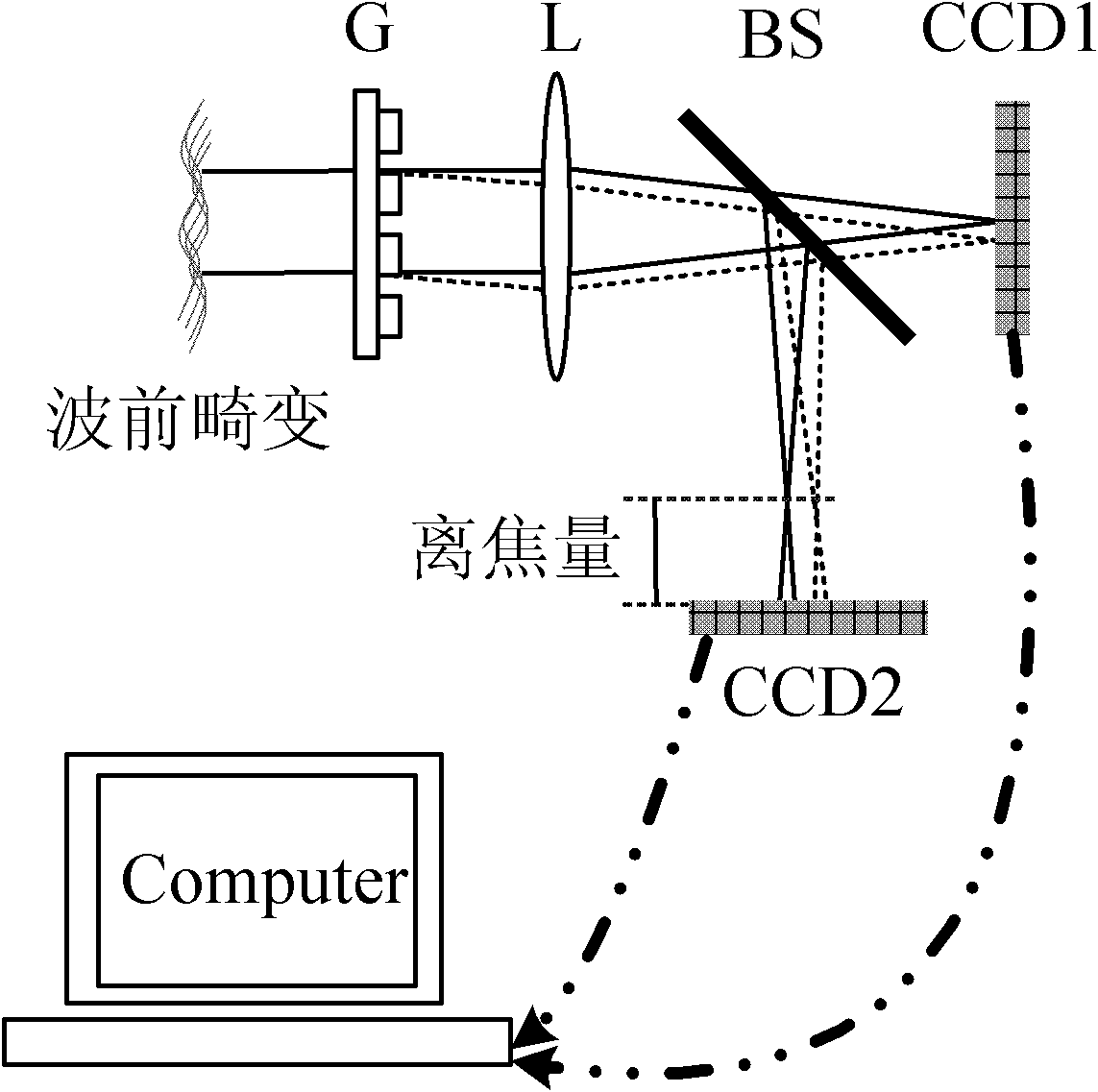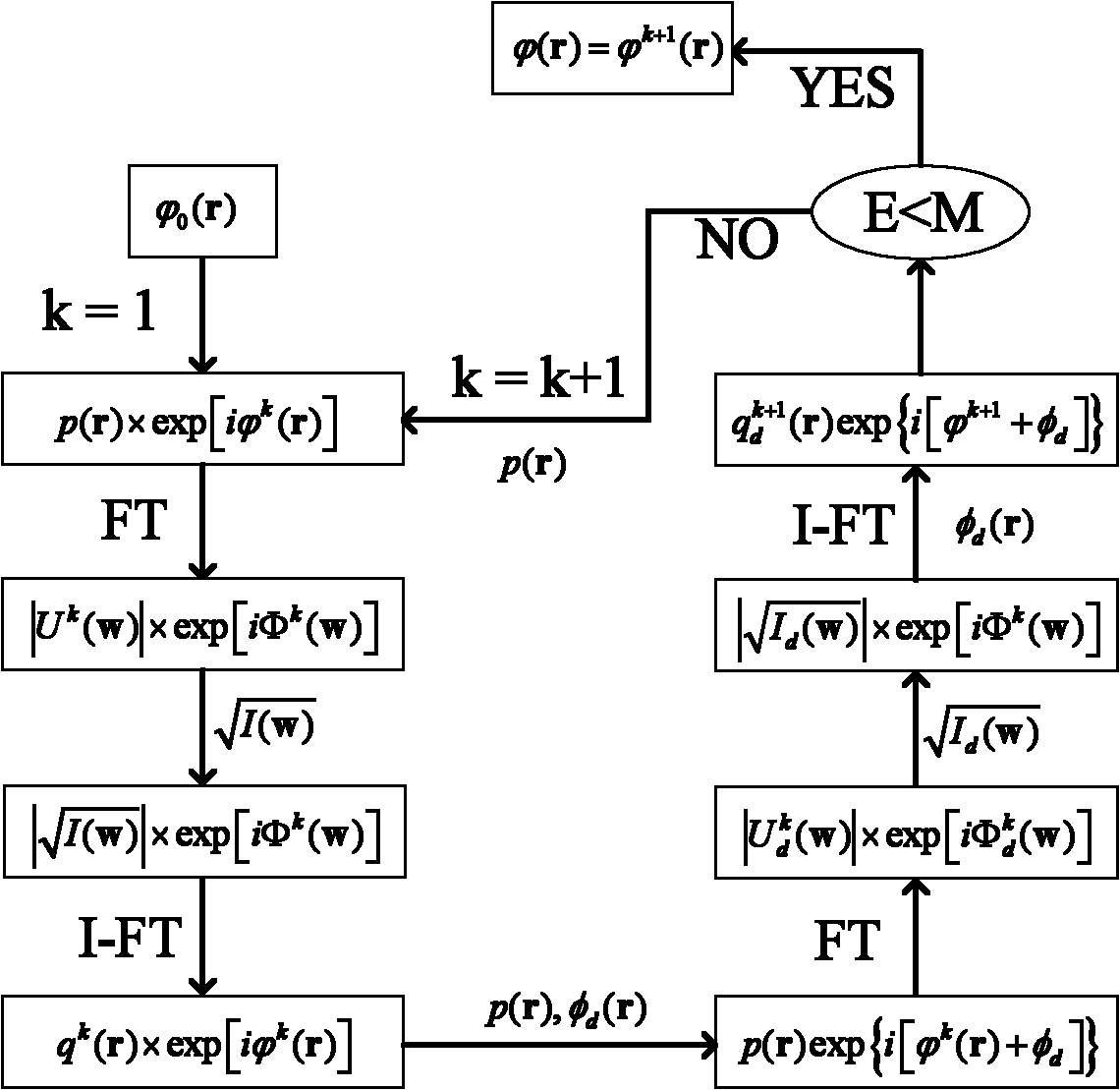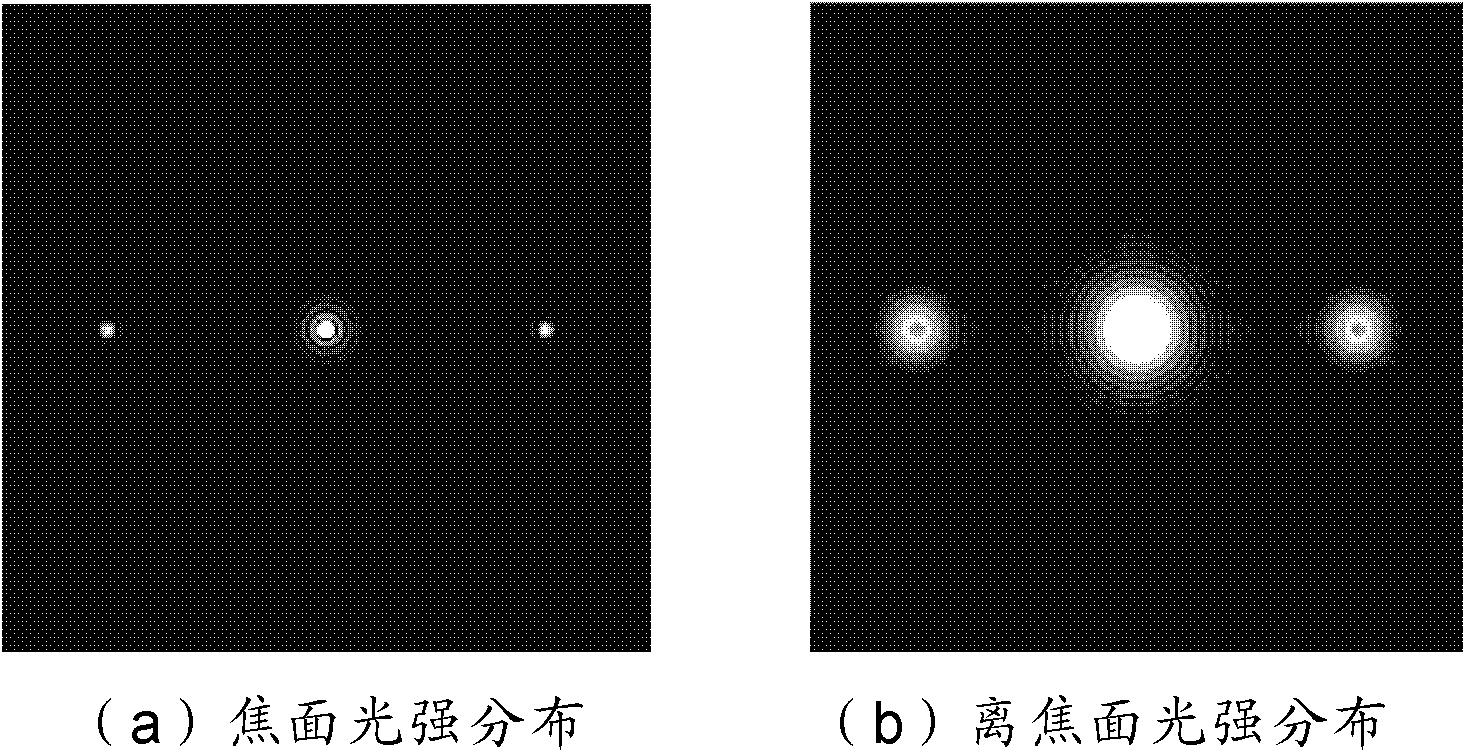Grating-based phase difference wavefront sensor
A wavefront sensor and phase difference technology, applied in instruments, scientific instruments, measurement optics, etc., can solve the problems of difficulty in accurate image acquisition, influence of light intensity distribution information, influence of detection accuracy, etc. Application value, application reliable effect
- Summary
- Abstract
- Description
- Claims
- Application Information
AI Technical Summary
Problems solved by technology
Method used
Image
Examples
Embodiment Construction
[0022] Such as figure 1 As shown, the grating type phase difference wavefront sensor includes: grating G, lens L, beam splitter BS, CCD imaging detectors CCD1 and CCD2, and computer C. The grating G is used to divide the incident beam into multiple beams with different intensities and consistent phases; the lens L is mainly used to converge the beams modulated by the grating G; the beam splitter BS makes the converged beams image on the photosensitive surfaces of CCD1 and CCD2 respectively Different detection areas; and use imaging detectors CCD1 and CCD2 to collect the light intensity distribution of the focal plane and defocused plane respectively; finally, the computer system C is mainly used to collect the image data output by the CCD imaging detectors CCD1 and CCD2, according to the detected position The position of the focal plane and the light intensity distribution information of the diffraction spot at the corresponding position away from the focal plane are calculated ...
PUM
 Login to View More
Login to View More Abstract
Description
Claims
Application Information
 Login to View More
Login to View More - R&D
- Intellectual Property
- Life Sciences
- Materials
- Tech Scout
- Unparalleled Data Quality
- Higher Quality Content
- 60% Fewer Hallucinations
Browse by: Latest US Patents, China's latest patents, Technical Efficacy Thesaurus, Application Domain, Technology Topic, Popular Technical Reports.
© 2025 PatSnap. All rights reserved.Legal|Privacy policy|Modern Slavery Act Transparency Statement|Sitemap|About US| Contact US: help@patsnap.com



